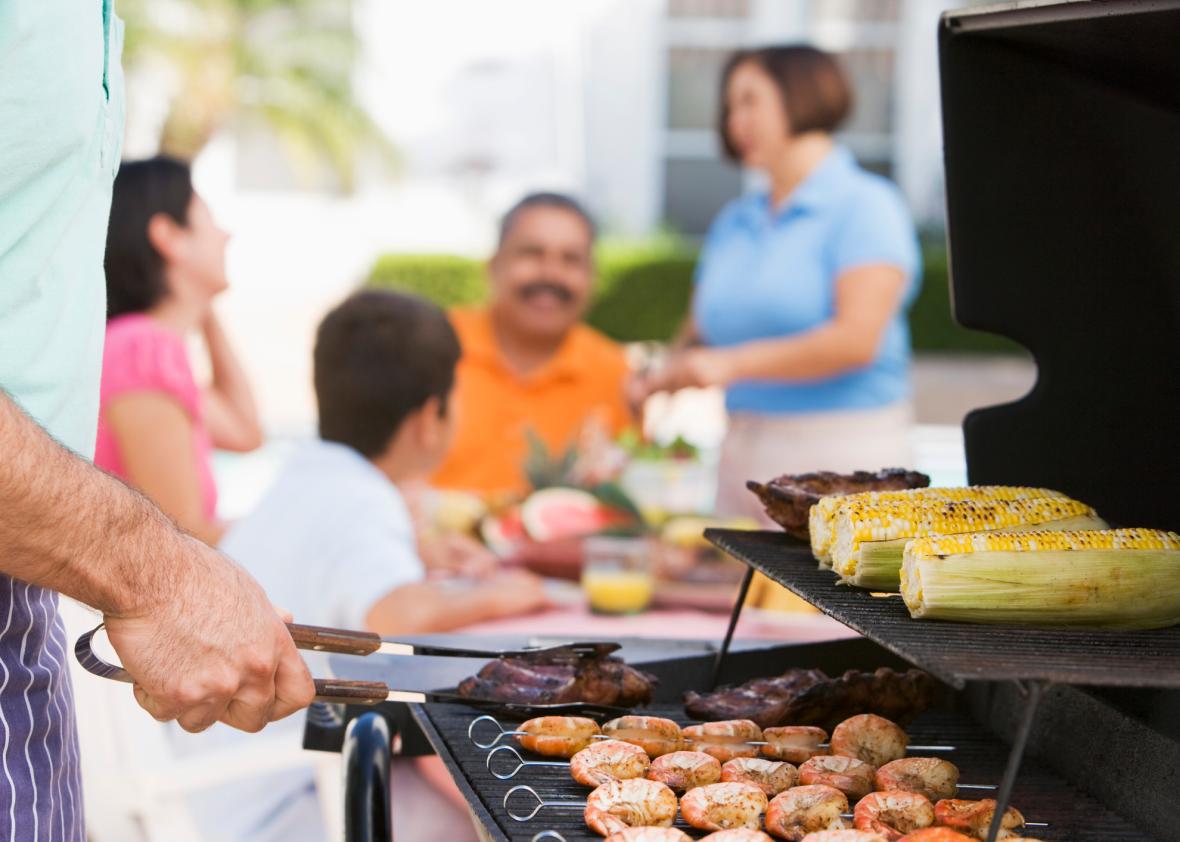Cookouts are essential to Fourth of July celebrations. But why? In 2011, Will Oremus investigated this American tradition. The original is reprinted below.
We tend to hold it as a self-evident truth that the proper way to celebrate the country’s independence is with a backyard barbecue. The country’s leading barbecue trade association reports that the Fourth of July is the nation’s most popular outdoor cooking holiday, with Memorial Day a distant second. When did throwing hunks of meat onto an open fire become patriotic?
In the early 1800s. Colonists in Virginia had been getting together in the summer to smoke large animals over a pit since before the nation’s founding in a tradition they apparently imported from the West Indies. (The word “barbecue” comes from the Spanish “barbacoa,” which is believed to derive from a word used by the indigenous Taino people of Hispaniola to describe a wooden rack used for smoking meats.) The practice spread in the first half of the 19th century as political leaders began staging rallies to mark Independence Day (which was not yet an official holiday); to draw crowds, they held massive barbecues, often roasting whole pigs or even oxen.
The Democratic-Republican Party, which enjoyed strong support in the southern states, found Independence Day cookouts particularly congruent with its ethos. Pushing agrarian virtues and states’ rights, party operatives used the rallies to extol the Declaration of Independence and celebrate the barbecue as an expression of regional pride. Elsewhere in the fledgling nation, there are reports of Americans commemorating the occasion with less familiar fare, including turtle soup, which enjoyed popularity in Philadelphia, Boston, and Charleston.
In the 20th century, as the nation’s population shifted from the country to the city and then the suburbs, the Independence Day cookout morphed from a public free-for-all into a family affair. Magazine advertisements of the pre-World War II era encouraged families to stage their own “backyard barbecues” with the aid of the newly popularized charcoal grill.
Bonus Explainer: Why do we celebrate America’s independence with frankfurters, wieners and hamburgers instead of with meat named after American cities? Because we’re a nation of immigrants. And besides, the modern hamburger is far enough removed from its namesake to merit its quintessentially American reputation. According to Josh Ozersky’s book The Hamburger: A History, the original “hamburg steak” served to German sailors at food stands along the New York City harbor in the early 19th century was a semi-cured slab of salted and spiced beef. Today’s version was made possible by a pair of American innovations: the meat grinder and the hamburger bun. Still, it took a while for the burger to shed its Teutonic connotations. During World War I, diners rebranded their patties as “Salisbury steak” or even “Liberty steaks” to avoid any association with the enemy. But by World War II, Americans had made the meat their own and seemed to have no qualms about the etymology of its name. As for frankfurters, which bear a closer resemblance to their German forerunners: Those with qualms can simply call them hot dogs.
Got a question about today’s news? Ask the Explainer.
Explainer thanks food historian Robert F. Moss, author of Barbecue: The History of an American Institution, and Len Travers of the University of Massachusetts-Dartmouth.
